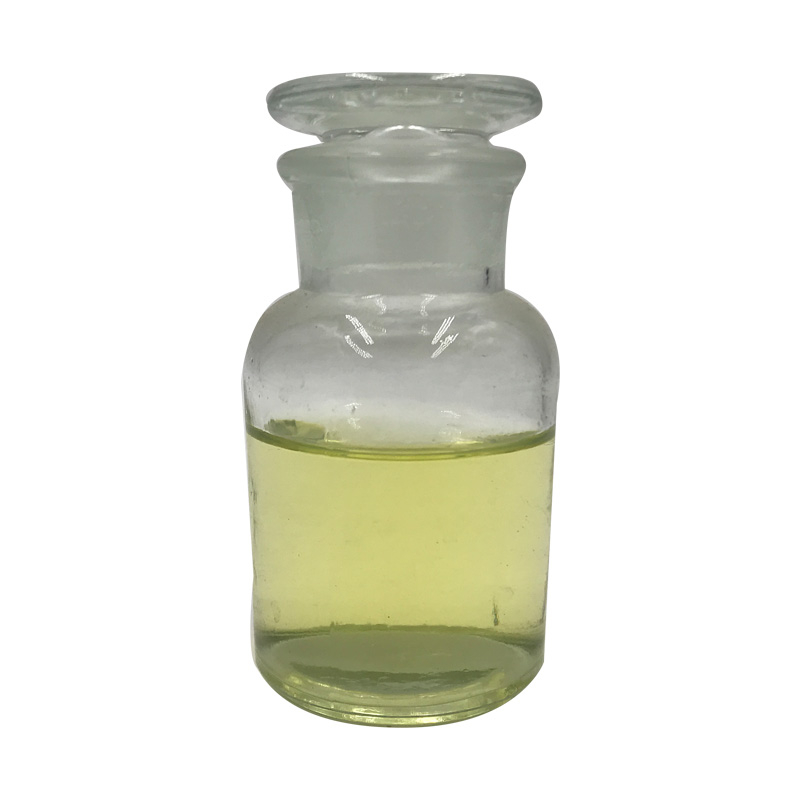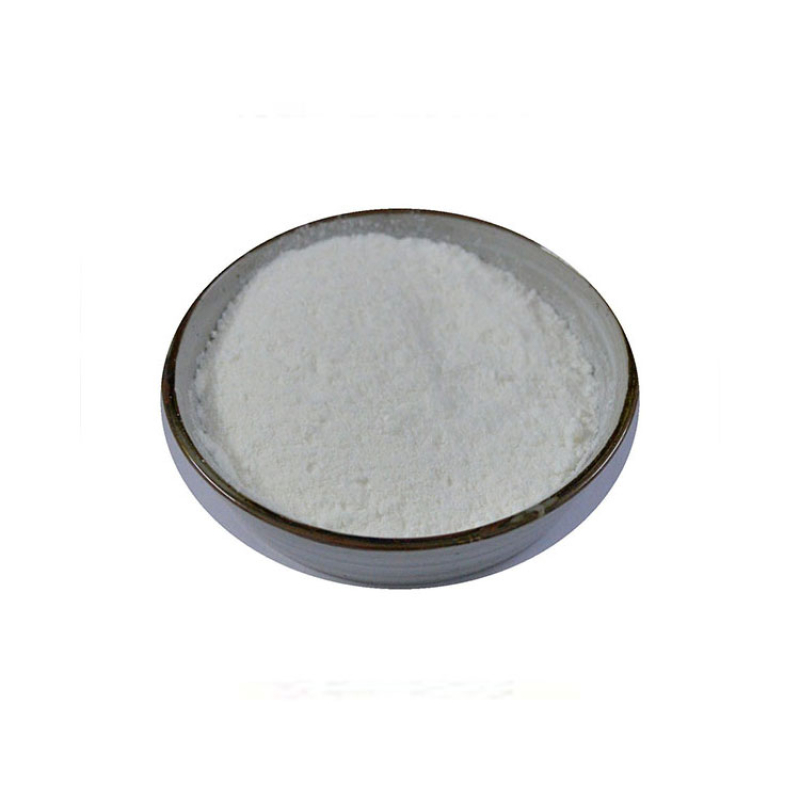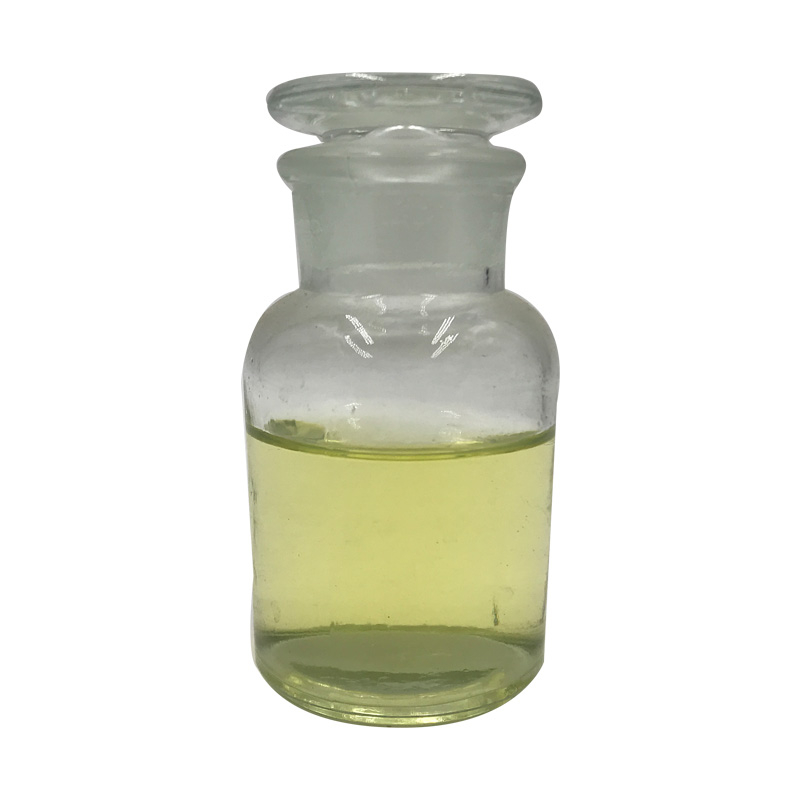Products Description of Decyl glucoside CAS#68515-73-1Decyl glucoside is a new type of nonionic surfactant alkyl polyglycoside (APG).
Contact Now
Products Description of 2,4,6-Tri-tert-butylphenol CAS#732-26-3Organic synthesis. Aviation gas oil antioxidant. Anti-aging agent for natural rubber and synthetic rubber. Low-efficiency stabilizer for synthetic rubber.
Contact Now
Products Description of Alkylsulfonic phenyl ester CAS#91082-17-6White crystalline powderAlkylsulfonic phenyl ester Chemical Propertiesrefractive index n20/D 1.500Fp 210 °Cstorage temp. 2-8°Ccolor APHA: ≤350 Factory and Equipment ShowFast delivery timeInventory 2-3 working days New production 7-10 working days
Contact Now
Products Description of 4-(4-Aminobenzyl)piperazine-1-carboxylic acid tert-butyl ester CAS#304897-49-24-(4-Aminobenzyl)piperazine-1-carboxylic acid tert-butyl ester is a carboxylic acid ester derivative and can be used as a pharmaceutical intermediate.4-(4-Aminobenzyl)piperazine-1-carboxylic acid tert-butyl ester Chemical PropertiesBoiling point 413.6±40.0 °C(Predicted)density 1.136±0.06 g/cm3(Predicted)storage temp. under inert gas (nitrogen or Argon) at 2–8 °Cpka7.16±0.10(Predicted)Safety InformationHS Code 2933599590Product Application of 4-(4-Aminobenzyl
Contact Now
DBE DIBASIC ESTER CAS#95481-62-2It is the uncooked fabric for the manufacturing of caprolactam and adipic acid; used as the solvents and diluent dealers of paints, inks, artificial resins and artificial rubber; additionally used as leather-based degreasing agent.Used as natural solvent;Raw substances and solvents of artificial resin and artificial fiber;Cyclohexanone is an vital chemical uncooked material, being the essential intermediates of making n
Contact Now
Products Description of METHYL LAURATE CAS#111-82-0Obtained by esterification of lauric acid and methanol. Heat the mixture of lauric acid, anhydrous methanol and concentrated sulfuric acid to reflux for 18 hours, pour the reaction into water, and separate the ester layer. Wash with water, saturated sodium bicarbonate solution and water in turn.
Contact Now
Products Description of 1,1,3,3-Tetramethoxypropane CAS#102-52-3The ester compounds synthesized based on 1,1,3,3-tetramethoxypropane have ester-forming quaternary carbon atoms at the β position of the molecular structure of 1,1,3,3-tetramethoxypropane.
Contact Now
Products Description of Trimethylsioxysilicate CAS#56275-01-5White powderTrimethylsioxysilicate Chemical PropertiesFp 4°C (39°F)EPA Substance Registry SystemSilicic acid, trimethylsilyl ester (56275-01-5)Safety InformationRisk Statements 11Safety Statements 24/25RIDADR 1993TSCA YesFactory and Equipment ShowFast delivery timeInventory 2-3 working days New production 7-10 working days
Contact Now
Methyl Acetate CAS#79-20-9Methyl acetate, additionally viewed as MeOAc , acetic acid methyl ester or methyl ethanoate, is a carboxylate ester with the formula CH3COOCH3. It is a flammable liquid with a generally high-quality smell reminiscent of some glues and nail polish removers.
Contact Now
Products Description of Lithium Aluminum Hydride CAS#16853-85-3Lithium aluminum hydride is a commonly used reducing agent in organic chemistry. It can reduce a variety of functional group compounds. It can also act on double-bond and triple-bond compounds to achieve hydroalumination. In addition, lithium aluminum hydride can also participate in the reaction as a base. For example, react LiAlH4 with 2 mol of ethanol to generate lithium diethoxyaluminum hydride [LiAlH2(OC2H5)2]; react with 3 mol of tert-butanol to generate lithium tri-tert-butoxyaluminum LiAlH[OC(CH3)3]3.
Contact Now
Products Description of Noopept CAS#157115-85-0N-(1-(phenylacetyl)-L-prolyl)glycine ethyl ester is marketed under the trade name NOOPEPT and is used to treat obesity, alcohol dependence, degeneration, or toxic injuries.Noopept Chemical PropertiesMelting point 94.0 to 98.0 °CBoiling point 547.3±50.0 °C(Predicted)density 1.202±0.06 g/cm3(Predicted)storage temp. -20°Csolubility Soluble in DMSO (up to 25 mg/ml)form powderpka13.41±0.20(Predicted)color white to beigeoptical activity[α]/D -115 to -125°, c = 0.5 in chloroform-dStability:Stable for 1 year from da
Contact Now
Methyl Methacrylate CAS#80-62-6Methyl methacrylate is an natural compound with the system CH2=C(CH3)COOCH3. This colourless liquid, the methyl ester of methacrylic acid (MAA) is a monomer produced on a giant scale for the manufacturing of poly(methyl methacrylate) (PMMA).Methyl methacrylate is a methyl ester of methacrylic acid. It is a colourless, risky liquid with an acrid fruity odour.
Contact Now
Products Description of PERKADOX PF-DBM25CAS#1931-62-0White powderPERKADOX PF-DBM25 Chemical PropertiesMelting point 130-131 °CBoiling point 260.8±42.0 °C(Predicted)density 1.185±0.06 g/cm3(Predicted)vapor pressure 0.147Pa at 25℃storage temp. Flammables areapka2.38±0.25(Predicted)Water Solubility 642mg/L at 20℃LogP0.9 at 30℃CAS DataBase Reference1931-62-0EPA Substance Registry System2-Propeneperoxoic acid, 3-carboxy-, 1-(1,1-dimethylethyl) ester, (2Z)- (1931-62-0)Safety InformationHazard Codes Xn-ORisk Statements 7-41-36/38-22Safety Statements
Contact Now
Products Description of Madecassic acid CAS#18449-41-7Madecassoside (MC) is the main active ingredient of triterpenoid saponins in Centella asiatica Urb., a plant of the Umbelliferae family. Studies have shown that MC has a wide range of pharmacological activities in vivo and in vitro, and can reduce collagen-induced arthritis inflammation, promote the proliferation of human fibroblasts cultured in vitro, treat or prevent hypertrophic scars and keloids, and protect myocardial ischemia-reperfusion injury.
Contact Now
Products Description of OXALIC ACID CAS#68603-87-2Oxalic acid standard solution is mostly used for quantitative detection of oxalic acid content in food and medicine. For example, oxalic acid standard solution can be used to determine the oxalic acid content in edible mushroom broth.
Contact Now
Products Description of Octanoic acid CAS#124-07-2Caprylic acid is a medium-chain fatty acid. It has 8 carbons in its chain, so it is also called n-caprylic acid. Caprylic acid is considered an essential fatty acid, which is necessary for the proper functioning of the human body.
Contact Now
Products Description of BIS(2-Methacryloxyethyl)phosphate CAS#32435-46-4 BIS(2-METHACRYLOXYETHYL) PHOSPHATE Chemical PropertiesBoiling point 221 °C(lit.)density 1.28 g/mL at 25 °C(lit.)refractive index n20/D 1.47(lit.)Fp >230 °Fstorage temp. 2-8°Cpka1.29±0.50(Predicted)EPA Substance Registry System2-Propenoic acid, 2-methyl-, phosphinicobis(oxy-2,1-ethanediyl) ester (32435-46-4)Safety InformationHazard Codes XiRisk Statements 36/37/38Safety Statements 26-36WGK Germany 3HS Code 29199000Product Applicati
Contact Now
Products Description of Methyl tetrahydropyran-4-carboxylate CAS#110238-91-0Tetrahydropyran-4-carboxylic acid methyl ester is a clear liquidMethyl tetrahydropyran-4-carboxylate Chemical PropertiesMelting point -33°CBoiling point 197°Cdensity 1.080 g/mL at 20 °C(lit.)Fp 86°Cstorage temp. Sealed in dry,Room Temperatureform liquidcolor ClearBRN 114974InChIKeyCNCMVGXVKBJYNU-UHFFFAOYSA-NCAS DataBase Reference110238-91-0(CAS DataBase Reference)Safety InformationHazard Codes XiRisk Statements 36-36/37/38Safety Statements 26-37
Contact Now
Product DetailsProducts Description of Octadecenoic Acid CAS#112-80-1Insoluble in water, soluble in benzene, chloroform, miscible with methanol, ethanol, ether and carbon tetrachloride. Because it contains double bonds, it is easily oxidized by air, producing an unpleasant odor and turning yellow. When treated with nitrogen oxides, nitric acid, mercurous nitrate and sulfurous acid, it can be converted into oleic acid. When hydrogenated, it becomes stearic acid. The double bonds can easily react with halogens to form halogenated stearic acid.
Contact Now
Products Description of Oxalic Acid CAS#144-62-7Oxalic acid is an organic substance with the chemical formula H₂C₂O₄. It is a metabolite of organisms, a medium-strong acid, widely distributed in plants, animals and fungi, and plays different functions in different organisms. Studies have found that more than 100 plants are rich in oxalic acid, especially spinach, amaranth, beet, purslane, taro, sweet potato and rhubarb.
Contact Now
BIS(2-METHACRYLOXYETHYL) PHOSPHATE Chemical PropertiesBoiling point 221 °C(lit.)density 1.28 g/mL at 25 °C(lit.)refractive index n20/D 1.47(lit.)Fp >230 °Fstorage temp. 2-8°Cpka1.29±0.50(Predicted)EPA Substance Registry System2-Propenoic acid, 2-methyl-, phosphinicobis(oxy-2,1-ethanediyl) ester (32435-46-4)Safety InformationHazard Codes XiRisk Statements 36/37/38Safety Statements 26-36WGK Germany 3HS Code 29199000Product Application of BIS(2-METHACRYLOXYETHYL) PHOSPHATE CAS#32435-46-4 Used in resin and
Contact Now
Products Description of Alginic acid CAS#9005-32-7Alginic acid is a viscous organic acid, also known as alginic acid and alginic acid. The product is white to light yellow-brown powder. The average molecular weight is about 240,000. Melting point>300℃. It is slightly soluble in hot water, and the viscosity of its aqueous solution is 4 times higher than that of starch. It is insoluble in cold water and organic solvents, and slowly dissolves in alkaline solutions.
Contact Now
Products Description of 2,3,4,5-Tetrafluorobenzoic Acid CAS#1201-31-62,3,4,5-Tetrafluorobenzoic acid is a chemical substance with the molecular formula C7H2F4O2.Colorless flaky crystals.
Contact Now
Products Description of (1S)-(+)-Camphor-10-sulphonic acid CAS#3144-16-9Optically active left- and right-handed camphorsulfonic acid is an important resolving agent for chiral isomer drugs.
Contact Now


































